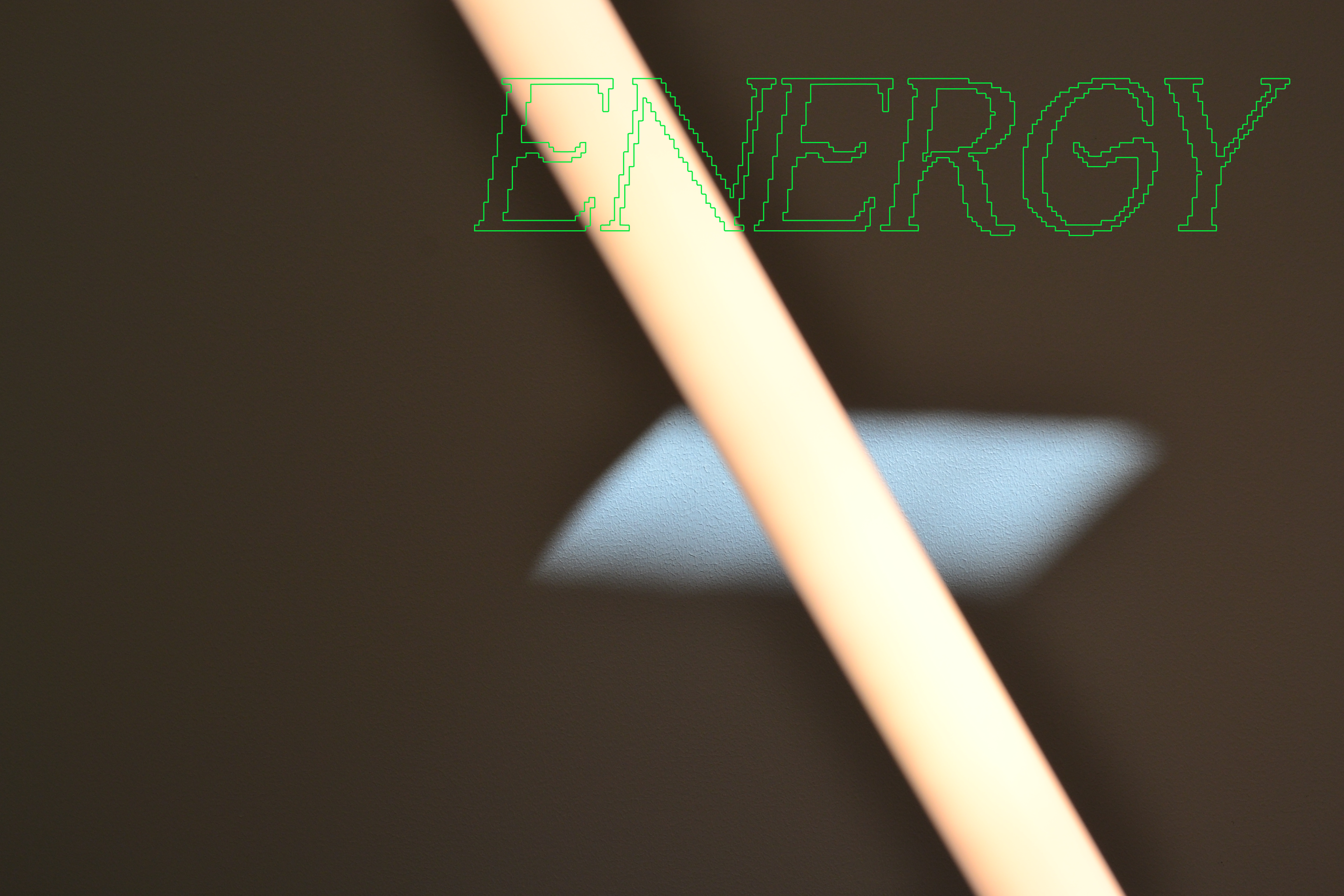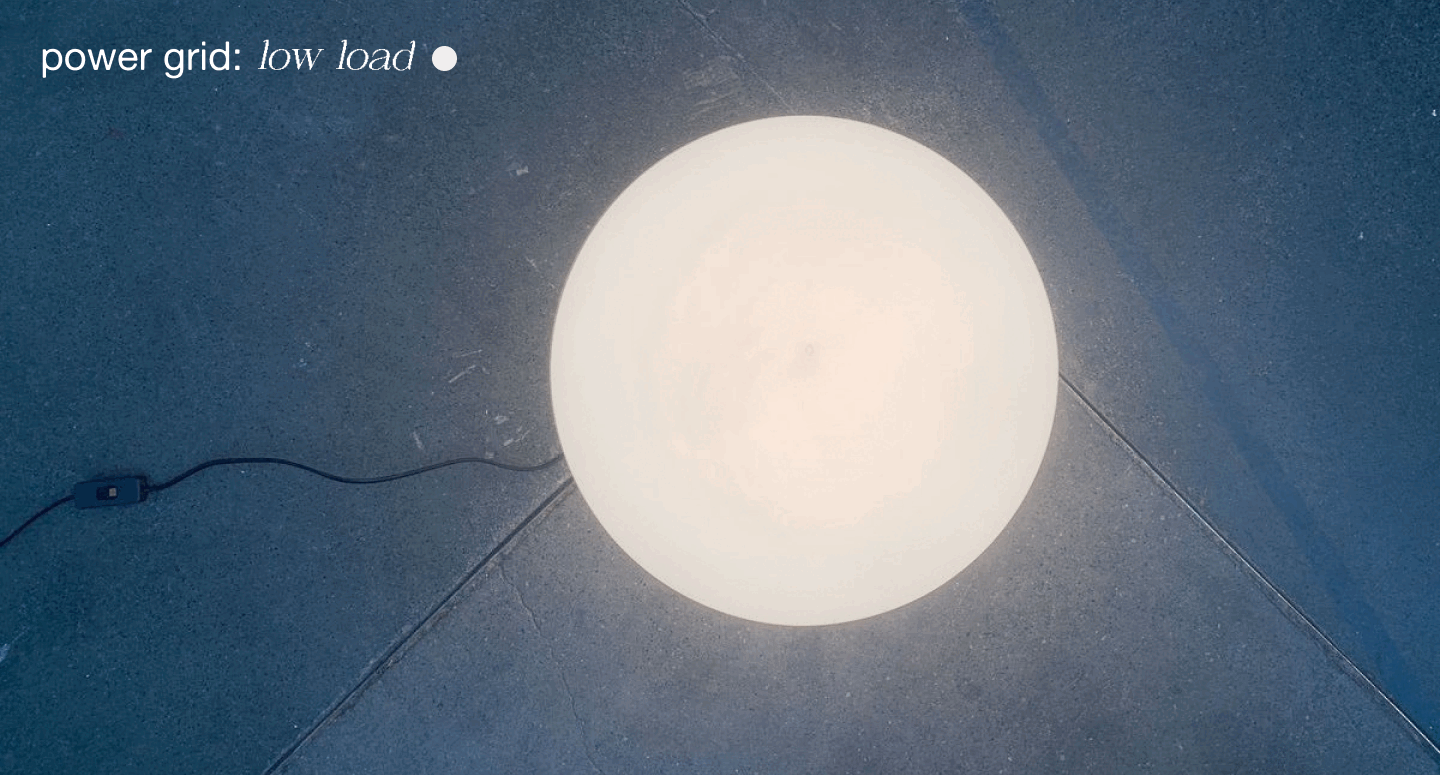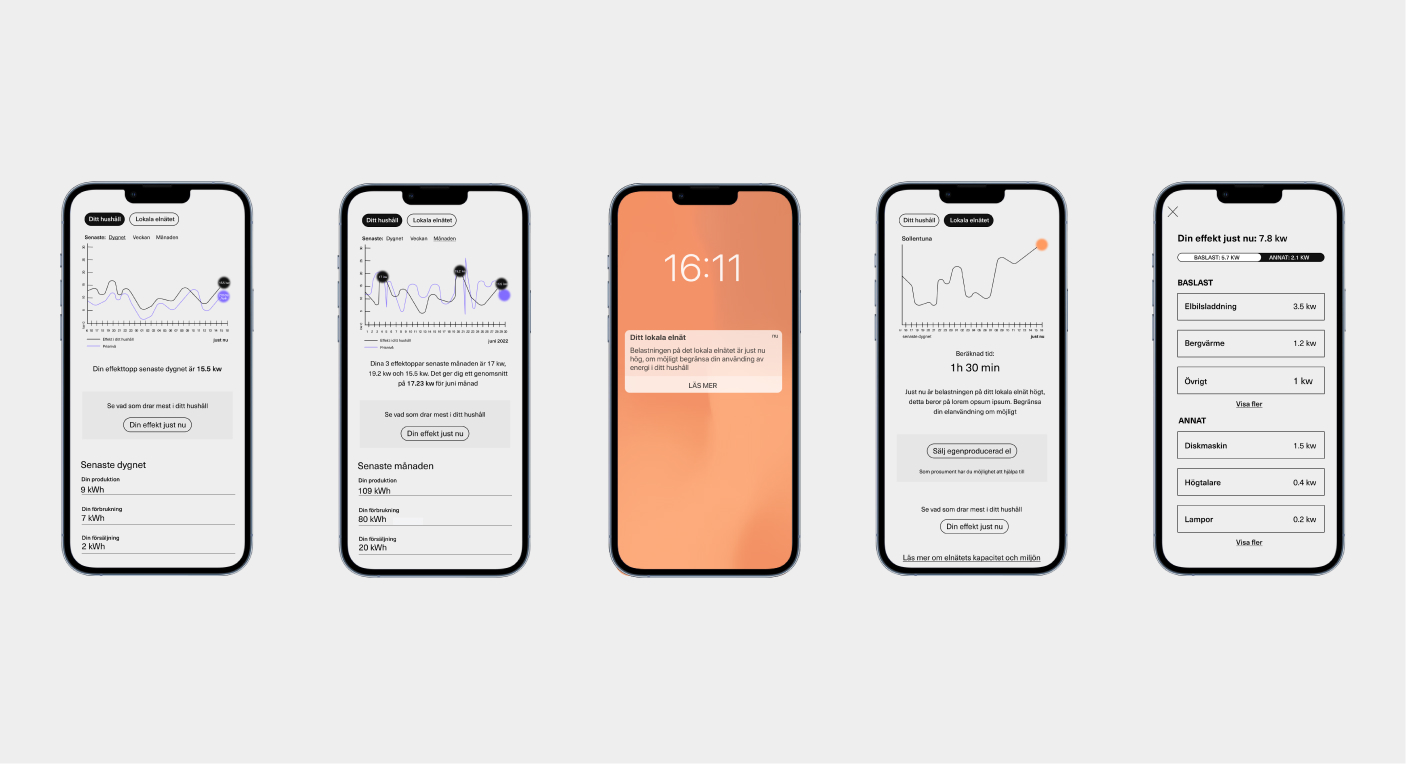A.Schönebeck
This research project explored how user feedback on household electricity use can drive flexibility and sustainability, especially in relation to tariffs. I led the design process at the Department of Strategic Sustainability Studies at KTH, focusing on gathering user insights and understanding the everyday context of both prosumers and consumers.
Supported by the Design for Energy-Efficient Everyday Life program, the project aimed to make energy use more intuitive and adaptable, helping users navigate tariffs as a price model in a way that makes sense for them.

Design Process
From start to finish, I focused on being intentional to ensure every phase was grounded in a holistic and user-centered approach. This included:
Problem definition
I worked closely with the research team to define the core problem, drawing from previous studies to understand the broader context of energy use, user behaviors, and existing barriers to energy-efficient practices. This step was key in gathering initial insights and setting a strong foundation for the project.
User Interviews
To get a deeper understanding of people’s challenges and needs around energy use, I conducted in-depth interviews with both consumers and prosumers. These conversations provided valuable qualitative insights that shaped the design direction, highlighting pain points and opportunities.
Workshops
I facilitated collaborative workshops with users, team members, and subject matter experts to generate ideas and align on solutions. These sessions encouraged cross-functional collaboration, helping ensure that the final design was not only user-centered but also aligned with technical constraints and sustainability goals.
Ideation
Building on insights from research and workshops, I led the ideation process to explore different design directions. Through brainstorming, mind mapping, and sketching, we developed and refined ideas based on feasibility and impact.
Prototyping
I translated the strongest ideas into low-fidelity prototypes, iterating on them based on feedback. This phase helped visualize concepts early, allowing for adjustments before investing in high-fidelity designs.
Testing
Usability testing played a key role in refining the designs. I ran both early-stage (formative) and final-stage (summative) tests to make sure the solutions were intuitive and met user needs. Each round of testing provided valuable input, leading to continuous improvements.
This iterative process allowed the design to evolve over time, to ensure the final concepts were both innovative and practical.
Deliverables
The project resulted in two distinct concepts—one designed for consumers and the other for prosumers—along with a sketch of a physical object: a lamp that provides feedback on energy use. More details on these concepts will be available once the report is published.
[1]: Lamp mirrors the load on the power grid by intensity and color

[2]: User interface prototype
